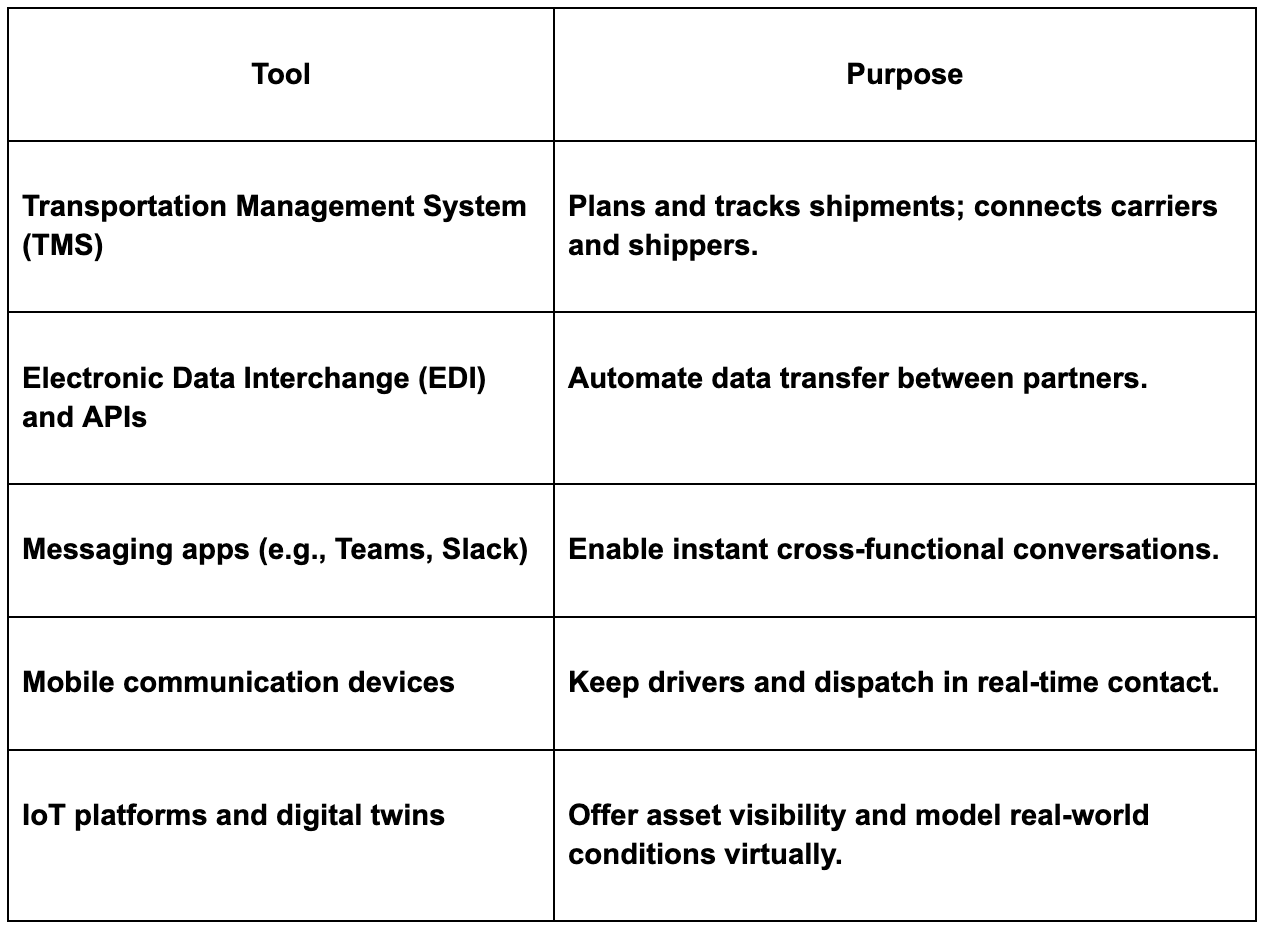Improving Communication Across Logistics Networks for Better Coordination
In today’s fast-paced supply chain environment, where speed and adaptability are everything, communication has become the driving force behind efficient logistics networks. From suppliers to drivers, warehouse staff to customers, every player in the chain relies on clear, timely, and accurate information. Unfortunately, communication breakdowns remain a common cause of delays, misaligned operations, and dissatisfied clients.
This article explores why improving communication is crucial, how to do it strategically, and what technologies and practices are shaping a more synchronized logistics future.
1. Why Communication Is Crucial in Logistics
A logistics network is an ecosystem made up of multiple, interdependent players—each with their own goals and data systems. Without strong communication between them:
Delays become more frequent as planning and execution fall out of sync.
Inventory buffers expand unnecessarily to cover for uncertainty.
Mistakes multiply when data is relayed manually or inconsistently.
Customers lose visibility and confidence in delivery timelines.
Effective communication ensures that everyone is aligned and equipped to make timely decisions. It’s not just an operational convenience—it’s a competitive necessity.
2. The Power of a Unified Communications Platform
One of the most impactful ways to boost communication across logistics is by adopting centralized systems that connect all key parties and functions.
Digital platforms such as transportation or warehouse management systems allow teams to:
View real-time updates on shipments and stock levels.
Share information across departments and partners in a standardized way.
Automate alerts, status updates, and performance tracking to keep everyone in the loop.
Some advanced networks even use digital twins—virtual models of physical assets or systems—to mirror operations in real time, improving coordination and responsiveness.
3. Standardization: A Must-Have for Clarity
Even the most advanced software falls short if partners speak different operational “languages.” That’s why standardizing communication is so important.
Key areas to align include:
Service expectations: Define KPIs such as delivery windows, handling procedures, and communication response times.
Terminology and documentation: Use consistent language and formats so that nothing is lost in translation—especially in global operations.
Escalation procedures: Make sure everyone knows what to do when something goes wrong and who to contact.
When expectations are clear and consistent, there’s less room for confusion and error.
4. Building Stronger Collaboration Between Stakeholders
Modern logistics networks require close collaboration between internal departments and external partners. Strong communication lays the foundation for this teamwork.
Tactics include:
Encouraging cross-functional planning between procurement, logistics, and customer service teams.
Holding regular coordination meetings with vendors, carriers, and warehouse operators.
Sharing goals and metrics to create joint accountability.
Instead of operating in silos, stakeholders begin to function as a single, aligned unit—working toward shared success.
5. Embracing Real-Time Visibility
Having access to real-time information makes communication not only faster but more meaningful. Rather than relying on reactive updates, teams can proactively solve issues before they escalate.
Technologies that enhance visibility include:
Tracking sensors for vehicles, cargo, and environmental conditions.
Data dashboards that pull together insights from various systems.
Predictive analytics that forecast delays, stock shortages, or demand changes.
The goal is to empower teams with information they can trust—and act on.
6. Choosing the Right Communication Tools
The right tools can dramatically improve the speed and clarity of communication in logistics.
Here’s a sample toolkit:
Select tools that integrate with existing systems and are user-friendly for all stakeholders involved.
7. Don’t Forget the Human Element
Technology enables communication—but people make it meaningful.
To strengthen the human side of coordination:
Encourage active listening and feedback sharing within and between teams.
Invest in cross-training so staff understand each other’s roles and constraints.
Recognize and reward effective communication, especially during disruptions or high-pressure situations.
A culture that values transparency and collaboration can weather disruptions and maintain performance under pressure.
8. Monitoring and Improving Over Time
Improving communication isn’t a one-time fix—it requires ongoing attention.
Ways to track progress include:
Monitoring KPIs such as delivery accuracy, communication response times, and error rates.
Gathering feedback through surveys or partner reviews.
Reviewing past incidents to understand where breakdowns occurred.
Running mock scenarios or “stress tests” to see how communication flows hold up under pressure.
By continually evaluating and refining processes, logistics leaders can stay ahead of potential communication gaps.
9. Real-World Example: Crisis Coordination in Action
Consider a scenario where a critical shipment is delayed at a port. In a well-connected logistics network:
The delay is flagged automatically by tracking systems.
Alerts go out to relevant teams—including customer service, dispatch, and production.
Stakeholders quickly assess options, such as rerouting or expediting alternate shipments.
Customers are notified proactively, maintaining trust and transparency.
The difference? All players are working from the same data, in real time, and know exactly who to communicate with to take action.
10. Communication as a Strategic Advantage
As logistics continues to evolve—incorporating automation, AI, and autonomous delivery—communication will only become more important. Fast, accurate, and transparent information exchange will define which companies lead and which fall behind.
To recap, here are the keys to strengthening communication across logistics networks:
Treat communication as a core strategic function, not just an operational task.
Invest in centralized systems that connect all stakeholders.
Standardize how you communicate, from terminology to service expectations.
Foster a culture of collaboration and feedback.
Equip your teams with tools that deliver visibility and real-time insight.
Continuously measure, test, and improve communication performance.
When executed well, coordinated communication isn’t just efficient—it’s transformative. It improves speed, reduces cost, builds stronger partnerships, and ultimately delivers better service to your customers.

